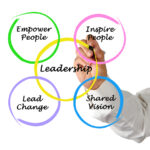 Our client is a leading operations management and analytics company that helps businesses enhance growth and profitability in the face of relentless competition and continuous disruption. Using our proprietary, award-winning Business E Framework™, which integrates analytics, automation, benchmarking, BPO, consulting, industry best practices and technology platforms, we look deeper to help companies improve global operations, enhance data-driven insights, increase customer satisfaction, and manage risk and compliance
Our client is a leading operations management and analytics company that helps businesses enhance growth and profitability in the face of relentless competition and continuous disruption. Using our proprietary, award-winning Business E Framework™, which integrates analytics, automation, benchmarking, BPO, consulting, industry best practices and technology platforms, we look deeper to help companies improve global operations, enhance data-driven insights, increase customer satisfaction, and manage risk and compliance
Analytics provides data-driven, action-oriented solutions to business problems through statistical data mining, cutting edge analytics techniques and a consultative approach. Leveraging proprietary methodology and best-of-breed technology, our client Analytics takes an industry-specific approach to transform our clients’ decision making and embed analytics more deeply into their business processes. Our global footprint of nearly 2,000 data scientists and analysts assist client organizations with complex risk minimization methods, advanced marketing, pricing and CRM strategies, internal cost analysis, and cost and resource optimization within the organization. serves the insurance, healthcare, banking, capital markets, utilities, retail and e-commerce, travel, transportation and logistics industries. (more…)




 By: Abbie Buck
By: Abbie Buck
 by Kumar Mehta
by Kumar Mehta by Liz Wiseman
by Liz Wiseman by
by